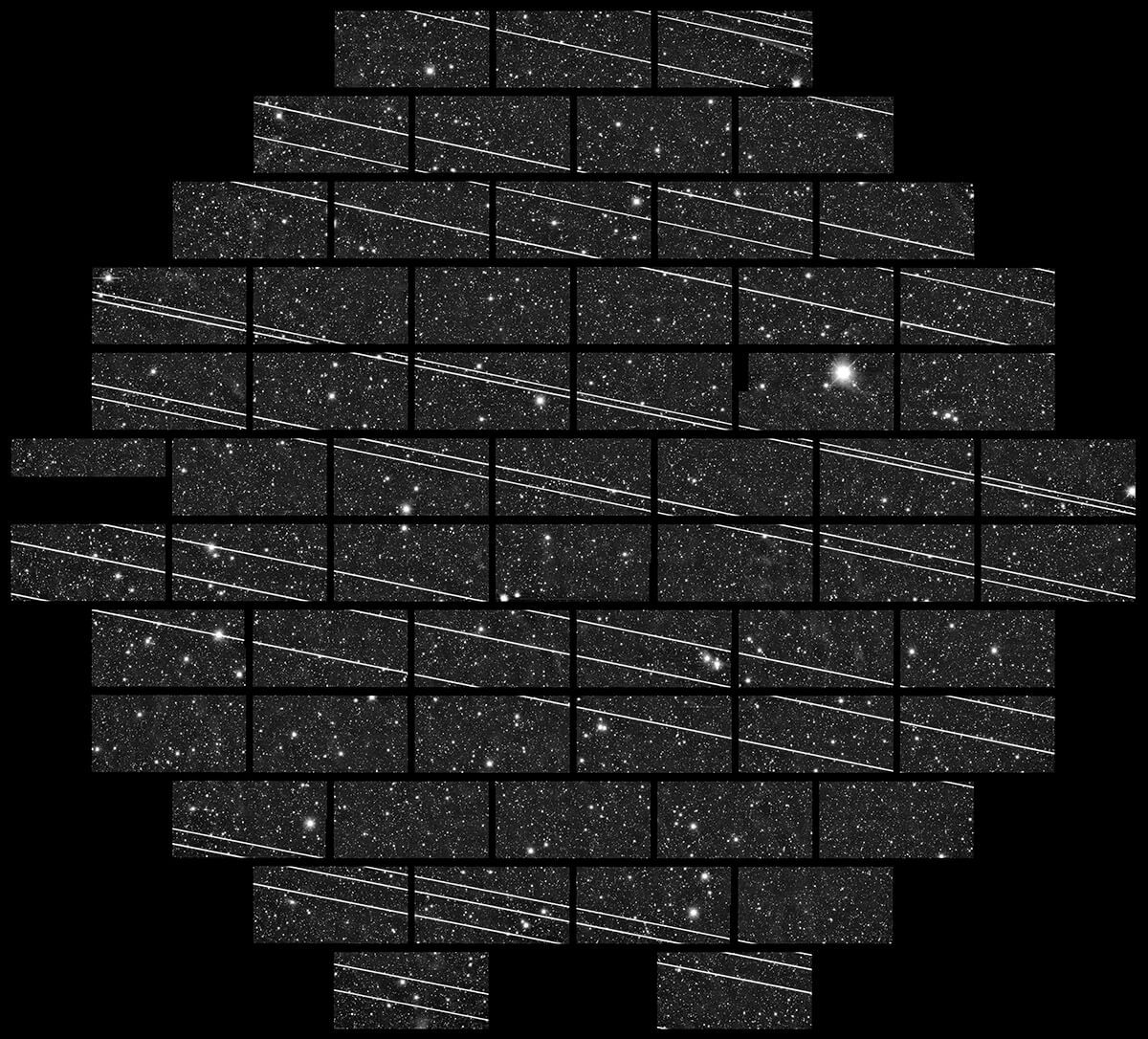
Huge constellations of internet satellites could fundamentally change how astronomers study the night sky and how the rest of us experience it, a new report finds.
The potential impacts of megaconstellations in low Earth orbit (LEO), such as SpaceX's Starlink network, "are estimated to range from negligible to extreme," according to a report from the Satellite Constellations 1 (SATCON1) workshop, which was released Tuesday (Aug. 25).
SpaceX has already launched about 600 Starlink satellites, and that's just the beginning. Elon Musk's company has approval to operate 12,000 Starlink spacecraft and has applied for permission for up to 30,000 more. And SpaceX is not alone; for example, Amazon aims to launch about 3,200 broadband satellites for its own network, known as Project Kuiper.
Related: SpaceX's Starlink satellite megaconstellation launches in photos
For perspective: There are currently about 2,500 operational satellites circling Earth, and humanity has launched fewer than 10,000 objects since the dawn of the space age in 1957.
The actual impact of this LEO population boom on the night sky depends on a number of factors, including the nature and goals of the observations being made; observers' ability to remove or mask satellite trails in their datasets; and the number, brightness and altitude of the satellites, the report's authors determined.
For instance, satellite trails will pose a particular problem for telescopes that view wide swaths of sky in visible and infrared light, such as the upcoming Vera C. Rubin Observatory in Chile.
Observing programs that rely upon data gathered during the twilight hours, such as searches for potentially hazardous asteroids and comets, will be disproportionately affected as well. That's because LEO satellites will remain illuminated by the sun at these times, the report explains.
But big LEO networks could pose problems throughout the night if their constituent satellites are high enough up. For example, a large constellation orbiting 750 miles (1,200 kilometers) above Earth, as OneWeb's 74 broadband satellites do, "will be visible all night during summer and significant fractions of the night during winter, fall, and spring, and will have negative impacts on nearly all observational programs," the new report states.
(OneWeb had intended to launch at least 650 internet satellites, but it's unclear if the constellation will ever get that big. OneWeb declared bankruptcy this year and will be bought by a consortium led by the British government and the Indian company Bharti Global.)
Constellations that orbit less than 370 miles (600 km) above Earth won't have nearly the same all-night impact, the report's authors determined. Starlink falls into this category; its satellites fly at an altitude of about 340 miles (550 km).
It's quite early in the megaconstellation buildout, so there's still time to minimize the deleterious effects of the satellite swarms. And the new report lays out some recommendations for doing just that, including:
- Deploy satellites no higher than 370 miles (600 km);
- Reduce satellites' brightness by controlling their orientation, darkening them and/or shading their reflective surfaces (as SpaceX is starting to do with Starlink craft);
- Support the development of image-processing software that minimizes the impact of satellite trails;
- Make satellites' orbital information available so astronomers can point their telescopes away from them.
The report also recommends launching fewer or no LEO megaconstellations, noting that this "is the only option identified that can achieve zero impact." But it seems naive to think this one has a chance of being followed.
The SATCON1 workshop was organized by the U.S. National Science Foundation's NOIRLab and the American Astronomical Society and held virtually from June 29 to July 2, 2020. You can read the full report for free here.
Mike Wall is the author of "Out There" (Grand Central Publishing, 2018; illustrated by Karl Tate), a book about the search for alien life. Follow him on Twitter @michaeldwall. Follow us on Twitter @Spacedotcom or Facebook.
"impact" - Google News
August 26, 2020 at 06:57PM
https://ift.tt/3hIU9Mp
Satellite megaconstellations could have 'extreme' impact on astronomy, report finds - Space.com
"impact" - Google News
https://ift.tt/2RIFll8
https://ift.tt/3fk35XJ
Bagikan Berita Ini















0 Response to "Satellite megaconstellations could have 'extreme' impact on astronomy, report finds - Space.com"
Post a Comment